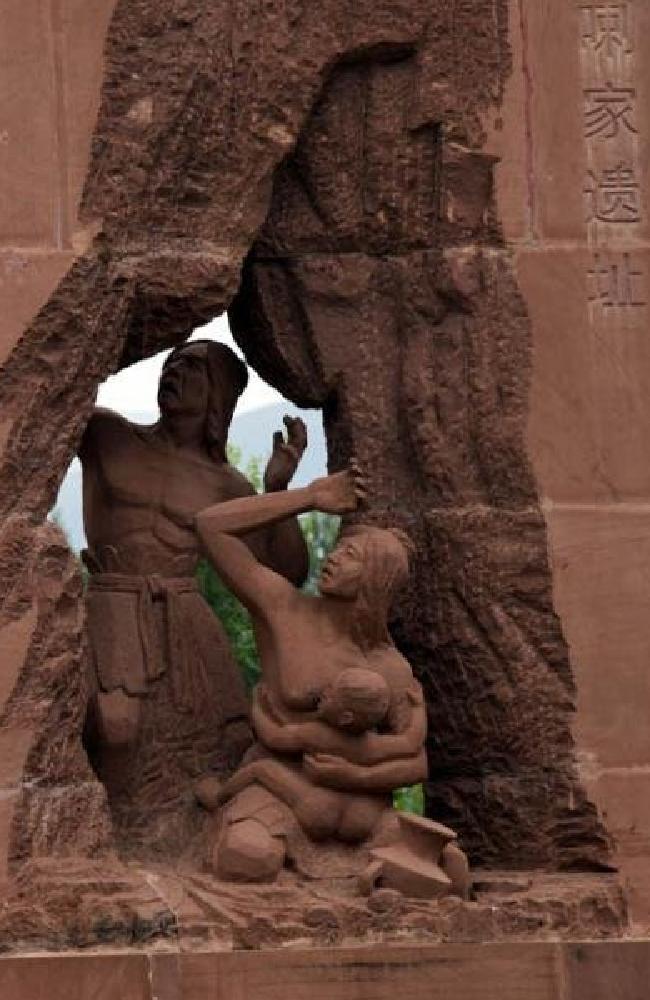
Protective embrace ... These remains are 4000 years old.
TERROR is timeless. Like the 2000-year-old petrified population of Pompeii, the final moments of the 4000-year-old earthquake victims of Lajia, China, are eternal.
While the stark human outlines of Pompeii and baked bones of Herculaneum have become a common-enough image to have lost much of their impact, these pictures out of China’s Qinghai province are brutally confronting.

Source: AustralscopeSource:Supplied
One cannot help but draw a common link between the human suffering, even though they are separated by 9600km and 2000 years.
RELATED: 9000-year-old monolith found on Mediterranean sea floor
Earlier this year authorities put on display the remains of a petrified four-year-old child and his mother, clinging to each other as the volcanic tide of gas, ash and dust flowed over their house.

Tragedy frozen in time ... A petrified parent and child, victims of the eruption of Vesuvius in 79AD, undergoing conservation work inside a laboratory in Pompeii. Source: AFPSource:Supplied
It’s a scene echoed in a display in central Chian’s Qinghai province.
Here, it was not a volcano.
Instead, it was a collapsed Bronze Age building and mudslide which preserved the disaster scene for posterity.
Once again, it was a family home: A place of refuge during a terrible event.
Alone, against one wall, is the remains of the mother with her child in her arms.

Source: AustralscopeSource:Supplied
The scene is repeated on a nearby floor: Another mother and child in death’s embrace.
Finally, against a nearby wall, the skeletons of two children are seen still clinging to that of an adult.
It’s a sight the China People Daily reports brings visitors to tears at the Lajia Ruins Museum.

A monument at the entrance to the Lajia Ruins Museum in China’s Qinghai province. Source: Source: China People DailySource:Supplied
Why Can't We Predict Earthquakes?51:54

Horizon finds out the reasons why earthquakes remain so difficult to predict.













